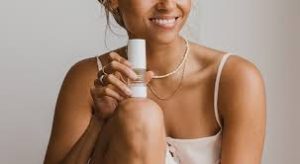How to choose beauty products guide
Choosing beauty products can be overwhelming with the vast array of options available. Here is a guide to help you navigate the process:
- Identify Your Needs: Determine your specific skincare or beauty needs. Consider factors such as your skin type, concerns (e.g., acne, dryness, aging), and desired outcomes (e.g., hydration, brightening, smoothing). This will help you narrow down your search and focus on products that target your specific concerns.
- Research and Educate Yourself: Take the time to learn about different product categories, ingredients, and formulations. Understand which ingredients are beneficial for your skin type and concerns, and which ones to avoid. Online resources, beauty blogs, and reputable skincare websites can provide valuable information to help you make informed choices.
- Read Product Descriptions and Labels: When browsing beauty products online, carefully read the product descriptions. Look for key information such as the purpose of the product, its benefits, recommended usage, and specific ingredients. Pay attention to any claims made by the product and assess whether they align with your needs.
- Consider Reviews and Ratings: Customer reviews and ratings can offer valuable insights into the effectiveness and user experience of a product. Look for reviews from individuals with similar skin types or concerns to get a better understanding of how the product may work for you. Consider both positive and negative reviews to get a balanced perspective.
- Check for Allergens or Irritants: If you have known allergies or sensitivities, be cautious when choosing beauty products. Check the ingredient list for potential allergens or irritants that may cause a reaction. Look for products that are labeled hypoallergenic or suitable for sensitive skin.
Identify Your Needs
- Skin type: Determine your skin type (e.g., oily, dry, combination, sensitive) as different beauty products are formulated to address specific skin concerns. Look for products that are suitable for your skin type to ensure they work effectively and don’t cause any adverse reactions.
- Skin concerns: Identify any specific concerns you want to address, such as acne, aging, uneven skin tone, or hydration. This will help you choose products with targeted ingredients and formulations designed to address those concerns.
- Ingredients: Pay attention to the ingredients used in the beauty products. Look for beneficial ingredients like antioxidants, hyaluronic acid, retinol, and vitamins, which can help improve the condition of your skin or hair. Avoid products with ingredients that you are allergic to or that may cause irritation.
- Product purpose: Determine the purpose of the beauty product you are looking for. Are you seeking a cleanser, moisturizer, serum, sunscreen, makeup, or hair care product? Clearly define your requirements to narrow down your options and find products that serve your specific needs.
- Personal preferences: Consider your personal preferences, such as scent, texture, and application method. Some people prefer lightweight formulations, while others may enjoy richer textures. Find products that align with your preferences to enhance your overall experience and satisfaction.
Research and Educate Yourself
Researching and educating yourself about beauty products is an essential step in selecting the right ones for your needs. Here’s a guide on how to conduct effective research and educate yourself:
- Identify your needs: Determine your specific beauty concerns, such as skincare, hair care, makeup, or other areas you want to focus on. This will help you narrow down your research and find relevant information.
- Reliable sources: Seek information from reputable sources such as dermatologists, beauty experts, scientific studies, and trusted beauty publications. Look for sources that provide evidence-based information and have a good reputation for providing accurate and unbiased advice.
- Ingredient knowledge: Familiarize yourself with common beauty product ingredients and their benefits. Understanding ingredients will help you make informed decisions and identify products that address your specific concerns. Online resources, beauty books, and educational websites can provide comprehensive ingredient information.
- Understand product claims: Learn how to interpret product claims and marketing language. Many products make various claims, but it’s important to discern between substantiated claims and marketing hype. Look for products with proven results supported by scientific evidence.
- Read product reviews: Check customer reviews and testimonials for products you’re interested in. Reading about other people’s experiences can give you insights into the effectiveness and suitability of the products. However, remember that individual experiences may vary, so consider a range of reviews.

Read Product Descriptions and Labels
Reading product descriptions and labels is an important part of selecting beauty products. Here’s a guide on how to effectively interpret and utilize this information:
- Understand product purpose: Start by understanding the intended purpose https://www.buydo.eu of the beauty product. Is it a cleanser, moisturizer, serum, sunscreen, makeup, or hair care product? Knowing the product’s purpose will help you determine if it aligns with your needs.
- Read the product description: Carefully read the product description provided by the manufacturer or brand. It usually includes information about the product’s key features, benefits, and targeted concerns. Pay attention to specific claims or attributes that differentiate the product from others on the market.
- Identify key ingredients: Look for a list of ingredients in the product description or on the product label. The ingredient list is usually ordered from the highest concentration to the lowest. Identify key ingredients that are known to address your specific concerns or provide benefits you are looking for. Be mindful of any ingredients you may be allergic to or that could potentially irritate your skin.
- Avoid harmful ingredients: Be aware of potentially harmful or irritating ingredients commonly found in beauty products, such as parabens, sulfates, phthalates, and artificial fragrances. If you have sensitivities or prefer to avoid certain ingredients, check if the product is labeled as free from those substances.
- Look for special features: Some products may have additional features or qualities that make them stand out. For example, products may be labeled as organic, cruelty-free, vegan, or suitable for sensitive skin. Consider these aspects if they align with your personal preferences and values.
By carefully reading product descriptions and labels, you can gain valuable information about the product’s purpose, ingredients, usage instructions, and any special features. This will help you make informed choices and select beauty products that are aligned with your specific needs and preferences.
Consider Reviews and Ratings
Considering reviews and ratings is an excellent strategy when selecting beauty products. Here’s a guide on how to effectively use reviews and ratings as a selection guide:
- Read multiple reviews: Look for reviews from different sources and platforms to get a variety of perspectives. Consider both expert reviews from trusted beauty publications and customer reviews from reputable websites or retailers. This will give you a more comprehensive understanding of the product’s performance and suitability.
- Look for detailed reviews: Pay attention to reviews that provide specific details about the user’s experience with the product. Look for information on how the product performed, its texture, scent, effectiveness, and any notable results or issues encountered. Detailed reviews can give you valuable insights into the product’s efficacy and potential compatibility with your needs.
- Consider ratings and overall feedback: Take note of the overall ratings and feedback provided by customers. High ratings and positive feedback can indicate that the product has generally satisfied a significant number of users. However, it’s important to remember that individual experiences may vary, so consider the overall consensus along with individual reviews.
- Check for authenticity: Look for verified purchase reviews whenever possible. Verified purchase reviews come from customers who have actually bought the product, reducing the likelihood of biased or fake reviews. Many reputable online retailers offer this verification feature.
- Pay attention to similar concerns: When reading reviews, focus on the concerns or goals that are similar to yours. If you’re looking for a product to address specific issues like acne, dryness, or aging, seek out reviews from individuals who have shared similar concerns. Their experiences can give you a better understanding of how the product may work for you.
Reviews and ratings can provide valuable insights into a product’s performance, effectiveness, and user satisfaction. By considering a range of reviews and paying attention to relevant feedback, you can make a more informed decision when selecting beauty products.
Check for Allergens or Irritants
Checking for allergens or irritants is an important step in selecting beauty products, especially if you have known allergies or sensitivities. Here’s a guide on how to identify and avoid potential allergens or irritants:
- Read the ingredient list: Carefully examine the product’s ingredient list provided on the packaging or in the product description. Look for common allergens or irritants that you are aware of, such as fragrances, certain preservatives (e.g., parabens), sulfates, dyes, or specific botanical extracts.
- Research potential allergens: If you’re unsure about certain ingredients or if they may cause allergies or irritations, conduct additional research. Reputable websites, dermatological associations, or allergy-specific organizations can provide information on common allergens or irritants to be cautious of.
- Be aware of your specific allergens: Understand your personal allergens or irritants. If you already know which ingredients or substances you are allergic or sensitive to, scan the ingredient list for those particular items. Look for statements like “free from,” “hypoallergenic,” or “suitable for sensitive skin” on the product label.
- Patch test new products: Perform a patch test before using a new product extensively. Apply a small amount of the product to a small area of your skin (preferably on the inner forearm or behind the ear) and observe for any adverse reactions over a 24 to 48-hour period. If any redness, itching, or irritation occurs, it may indicate an allergic or irritant reaction.
- Look for specific claims or labels: Some products are labeled as “fragrance-free,” “alcohol-free,” or “non-comedogenic.” These claims can help you identify products that are less likely to contain potential allergens or irritants. However, note that not all products without specific labels are necessarily harmful or irritating.
Remember, everyone’s skin is unique, and what causes a reaction in one person may not affect another. Being aware of potential allergens or irritants and checking ingredient lists can help you make more informed decisions and reduce the risk of adverse reactions when selecting beauty products.





